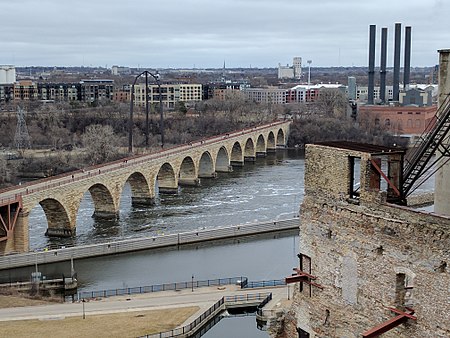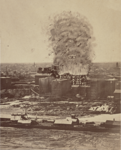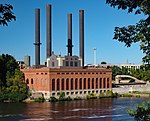Stone Arch Bridge (Minneapolis)

The Stone Arch Bridge is a former railroad bridge crossing the Mississippi River at Saint Anthony Falls in downtown Minneapolis, Minnesota. It is the only arched bridge made of stone on the entire Mississippi River. It is the second oldest bridge on the river next to Eads Bridge. The bridge was built to connect the railway system to the new Union Depot, which at that time was planned to be built between Hennepin Avenue and Nicollet Avenue. The bridge was completed in 1883, costing $650,000 at the time ($18.9 million today). 117 Portland Avenue is the general address of the historic complex. Located between the 3rd Avenue Bridge and the I-35W Saint Anthony Falls Bridge, the Stone Arch Bridge was built in 1883 by railroad tycoon James J. Hill for his Great Northern Railway, and accessed the former passenger station located about a mile to the west, on the west bank of the river. For a time, the bridge was dubbed "Hill's Folly" until the value of Hill's new bridge as a passenger rail link became evident.The structure is now used as a pedestrian and bicycle bridge. It was added to the National Register of Historic Places in 1971 as a part of the Saint Anthony Falls Historic District, (District #71000438). The bridge was designated as a National Historic Civil Engineering Landmark in 1974.
Excerpt from the Wikipedia article Stone Arch Bridge (Minneapolis) (License: CC BY-SA 3.0, Authors, Images).Stone Arch Bridge (Minneapolis)
West River Parkway Trail, Minneapolis
Geographical coordinates (GPS) Address External links Nearby Places Show on map
Geographical coordinates (GPS)
| Latitude | Longitude |
|---|---|
| N 44.980833333333 ° | E -93.253611111111 ° |
Address
Stone Arch Bridge
West River Parkway Trail
55415 Minneapolis
Minnesota, United States
Open on Google Maps











